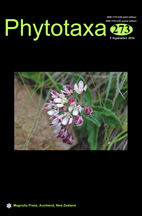Type: Correspondence
Published: 2016-09-09
Page range: 213–214
Abstract views: 23
PDF downloaded: 1
Validation of the name Artemisia anomala var. acuminatissima (Anthemideae, Asteraceae)
State Key Laboratory of Systematic and Evolutionary Botany, Institute of Botany, Chinese Academy of Sciences, Beijing 100093,
People’s Republic of China
University of Chinese Academy of Sciences, Beijing 100049, People’s Republic of China
State Key Laboratory of Systematic and Evolutionary Botany, Institute of Botany, Chinese Academy of Sciences, Beijing 100093,
People’s Republic of China
University of Chinese Academy of Sciences, Beijing 100049, People’s Republic of China
State Key Laboratory of Systematic and Evolutionary Botany, Institute of Botany, Chinese Academy of Sciences, Beijing 100093,
People’s Republic of China
University of Chinese Academy of Sciences, Beijing 100049, People’s Republic of China
Institue of botany, Jiangsu Province and Chinese Academy of Sciences, Nanjing 210014, People’s Republic of China
State Key Laboratory of Systematic and Evolutionary Botany, Institute of Botany, Chinese Academy of Sciences, Beijing 100093,
People’s Republic of China
Artemisia anomala
acuminatissima
Eudicots

